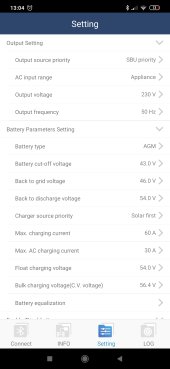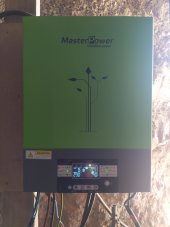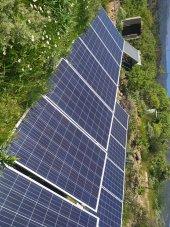Hello, new to the forum and new to solar power so please accept my apologies for stupid questions.
I have a new solar system installed that has completely failed in three months. I don't have any recall because I didn't check the credentials of the installer ( big mistake)
So I have 14 solar panels 250w ( only 12 of which are in use wired in series)
8, 6v lead acid GEL batteries wired in series
Masterpower inverter MF Omega UM 5kv3
It is a 48v system.
The batteries have failed and after a ton of research I have figured out that it is because the inverter charge controller cannot be set for GEL batteries.
So I have damaged the batteries by discharging to 100% for the last 3 months.
Lesson learned massively! Now I am trying to figure out my best options, I took out a loan to get this system installed after being without power for three years and my funds are very limited.
From my research my options are, replace my inverter with one that can charge the batteries like the victron multiplus ii (not sure if I need the mppt controller with that also) and hope and pray that they can last a little longer, OR replace the batteries my best option being a 4.8kw lithium battery (but not 100% sure if that would even work without changing the inverter set up as well)
Another professional recommended that I keep everything as is and install a victron mppt smart solar 250/100ve.can controller. But he won't install it for me because of the batteries I have.
Either one of the ways is going to cost more money than I have so trying to figure out my best option here.
Eventually, I want to upgrade it all to the system I should have got in the first place with lithium batteries and a quality inverter. But it's going to be over a period of time and I really need to at least power my WiFi and lights in the evening.
Any help would be massively appreciated.
I have attached photos of what I have installed now.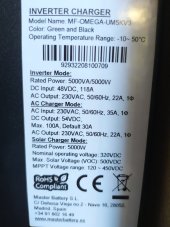
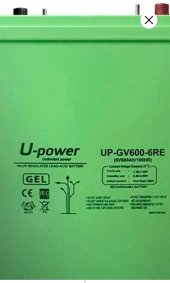
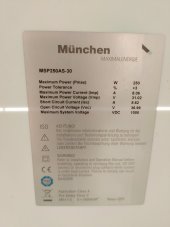
I have a new solar system installed that has completely failed in three months. I don't have any recall because I didn't check the credentials of the installer ( big mistake)
So I have 14 solar panels 250w ( only 12 of which are in use wired in series)
8, 6v lead acid GEL batteries wired in series
Masterpower inverter MF Omega UM 5kv3
It is a 48v system.
The batteries have failed and after a ton of research I have figured out that it is because the inverter charge controller cannot be set for GEL batteries.
So I have damaged the batteries by discharging to 100% for the last 3 months.
Lesson learned massively! Now I am trying to figure out my best options, I took out a loan to get this system installed after being without power for three years and my funds are very limited.
From my research my options are, replace my inverter with one that can charge the batteries like the victron multiplus ii (not sure if I need the mppt controller with that also) and hope and pray that they can last a little longer, OR replace the batteries my best option being a 4.8kw lithium battery (but not 100% sure if that would even work without changing the inverter set up as well)
Another professional recommended that I keep everything as is and install a victron mppt smart solar 250/100ve.can controller. But he won't install it for me because of the batteries I have.
Either one of the ways is going to cost more money than I have so trying to figure out my best option here.
Eventually, I want to upgrade it all to the system I should have got in the first place with lithium batteries and a quality inverter. But it's going to be over a period of time and I really need to at least power my WiFi and lights in the evening.
Any help would be massively appreciated.
I have attached photos of what I have installed now.






